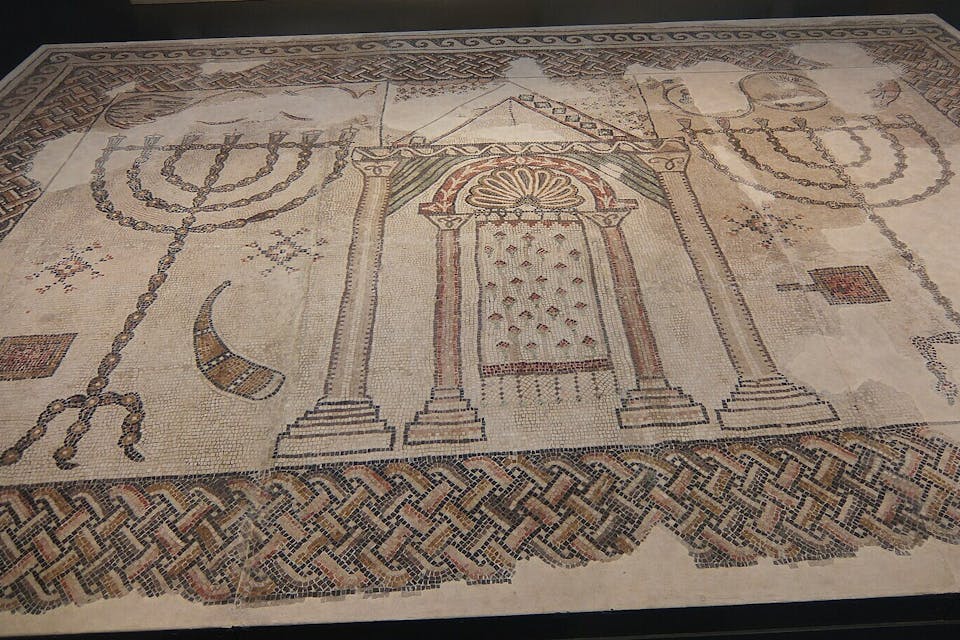
June 11, 2025
How Mosaics Got Their Name, and How “Mosaic” Got Its
Moses, the muses, and an early-1960s Jewish magazine at Harvard.
How did this website get its name? And when and where did the word “mosaic” get the double meaning that lies behind this name? Recently, I took the time to find out.
It turns out that there are no mysteries here. Both meanings of “mosaic” go back to antiquity: that of having to do with the figure or promulgations of Moses (in which case the word is usually capitalized), and that of a decorative or pictorial work of art composed of small colored squares of stone, glass, or ceramic. In its latter sense, “mosaic” can be traced to hē Mousa, “the Muse,” Greek mythology’s divine source of artistic inspiration, originally conceived of as a single female deity and later divided into nine goddesses (mousai) of song, music, poetry, dance, and the fine arts. Thus, whereas Homer begins his Odyssey, composed about 700 BCE, with the invocation Andra moi ennepe, Mousa, polytropon, “Of the man sing to me, Muse, him of many devices,” Virgil, seven centuries later in his Aeneid, turns to the goddess of epic poetry in appealing, Vos, o Calliope, precor, adspirate canenti—“You [muses], [and you,] O Calliope, pray aid my singing.”
In time, Mousa spun off a large number of Greek derivatives, such as musikē, music or poetry sung to it, museion, a temple of the muses (from which comes “museum”), and mousikos, a work of art. The latter term was borrowed by Latin as mosaicus, and when, in the early centuries of the Christian era, walls and floors of tesserae (as the little stone, glass, or ceramic squares were known) grew common in the Roman empire, mosaicus came to refer specifically to them. In time the word jumped from Latin to Italian as mosaico, passed from Italian into French as mosaïque, and entered English by the late 16th century. It then had to wait another long period to be given the additional metaphorical meaning of any unified assemblage of diverse parts. An early example of such usage in English is the art critic John Ruskin’s writing in his The Stones of Venice (1851–53) of “that variegated mosaic of the earth’s surface that a bird sees in its migrations.”